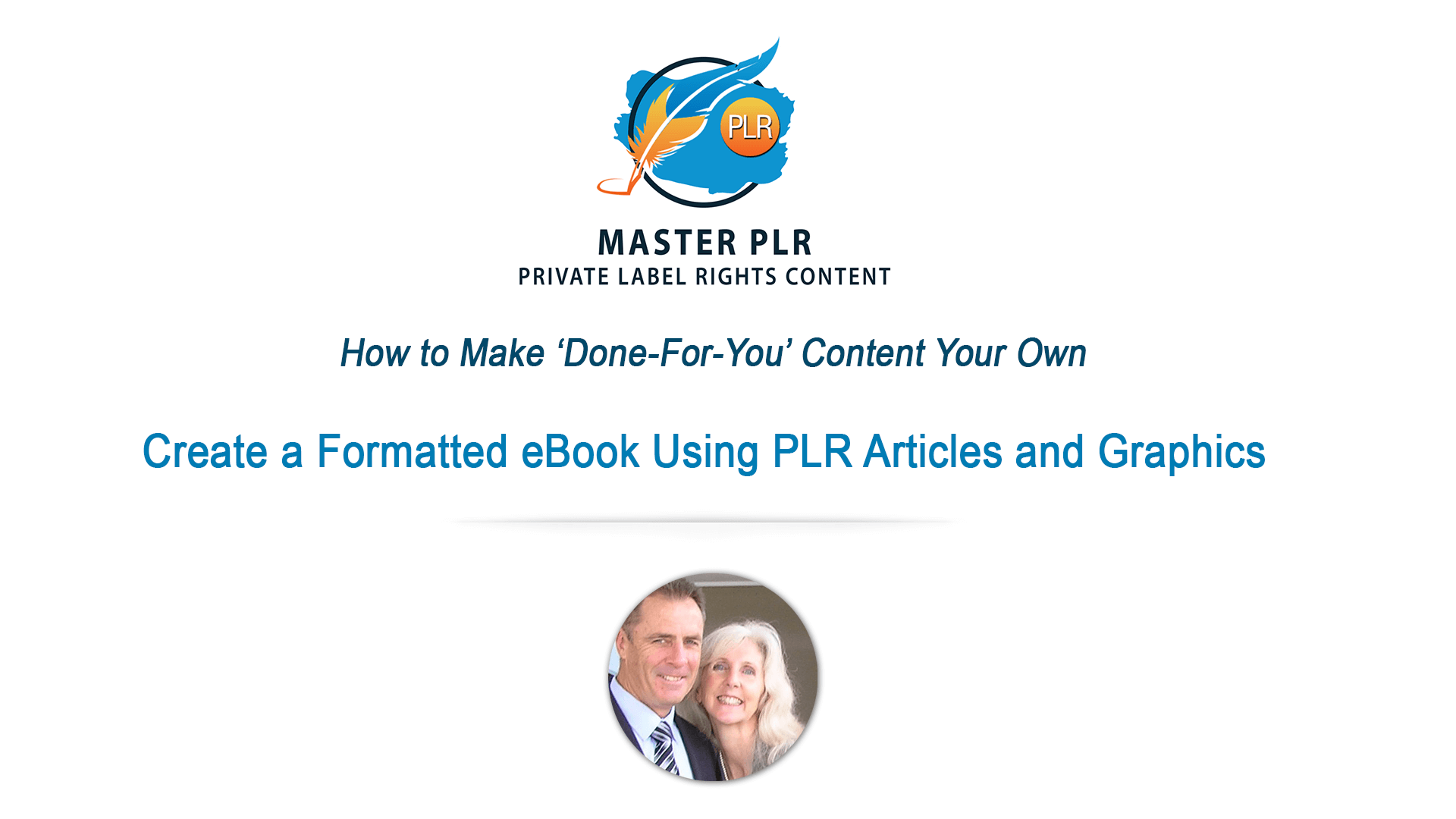To Agree or Disagree with Your Content
Have you ever bought Private Label Rights articles or ebooks and wondered if it’s content you agree with? For example it may not be exactly what you preach. You may have a totally different opinion to the content you just purchased. You may also feel like you wasted your money because it isn’t what you wanted to say.

PLR content has enormous potential if you just learn how to tweak the direction of the existing content. So what do I mean by that?
Let me give you an example to explain. You may have an article on colon cleansing that promotes the health and wellness benefits, whereas you may be totally opposed to the idea of cleansing your colon.
If you know how to work with the various viewpoints, you can effectively turn one piece of content into an almost endless stream of writing. It also helps you get the most out of your PLR purchases!
Using your PLR this way also helps you be ‘unique’. This is a great way to set yourself apart from your competition and others who may have purchased the PLR content. Other people may be just using the PLR straight out of the pack…which is fine…or spinning it with software that ‘humans’ can’t read or enjoy. If you rewrite yours with a different angle or opinion, yours will automatically become unique due to the different tone in your article.
Agree or Disagree
One ‘tack to take’ is disagreement. Pick faults in the PLR that you buy. So don’t just go buying PLR that you agree with – seek out content you can disagree with too. As a PLR buyer as well as a seller, I used to find myself years ago, wishing there was content I agreed with! I had a particular ‘voice’ or persona I wanted to portray and there wasn’t much PLR content that suited me. (That’s why I became a seller!)
Anyway, I am digressing…to disagree with content can give you the perfect opportunity to showcase your personality and opinion and it helps you establish yourself as an expert with your own advice.
Your Target Audience or Demographics
Who is your target audience? Demographics are the target audience you’re speaking to. So if the PLR you buy is a report about weight loss for women and your audience is men, take that content and turn it into a comparison article – “How weight loss for women differs from weight loss for men”. Do you see how it can still work for you?
You can also add specific demographic elements such as:
- Gender or age, which is self explanatory.
- Emotions and feelings can be added to soften or harden the content.
- Health – This one can be added almost anywhere, even in business articles. “Is your health affecting your ROI?”
- Earnings etc. – Again, finance can be added to almost any article. “Are you stressed because of high credit?” “Do you need to improve your self-esteem to get that promotion?”
Here is another example using our Emotional Freedom Techniques package. Think of everyone who could benefit from EFT and change the articles slightly to cover your viewpoint or demographics.
- EFT or Tapping for pain relief
- EFT or Tapping for seniors or children
EFT or Tapping for the stressed out business person - EFT or Tapping for weight loss and self esteem.
To add your own viewpoint or slant to the content, simply add it in somewhere in your title, the introduction, once or twice in the body and at the end in the conclusion. So let’s say the article starts like this:
‘EFT or Tapping can help those suffering with any type of pain, such as low back pain.’ You could change it slightly by saying, ‘EFT or Tapping can benefit seniors by helping them with their lower back pain or arthritis.
It doesn’t take much to tweak it, but sometimes you’ll want to add more verbiage to explain the connection. Of course, you want to read through the PLR and extract anything that is out of place once you’ve changed the feel of the article or the slant you have taken.
Checking Google News and Using Alerts
Google News is great when it comes to delivering slant advice. Type in your niche or topic and click on the News tab. Look what’s in the recent news.
Say you have found news about a fad diet. You could use this in two ways. First, take your PLR about a fad diet for example and prove your point with this new insight. Secondly, you could vehemently disagree with the news article and back up your opinion using your PLR content about the new fad diet being harmful.
It’s easy to check Google news or have alerts sent to your inbox, but also do some manual searches to see how you can diversify your content.
You might even want to start a file for your niche of nothing but ‘slants’ using Google news and save the links to those news articles so that you can quote directly from them.
The Power of Keyword Tools
Keyword tools save so much time. Over the years I have bought and used many and they have ranged from being free to very expensive. You can get many ideas that you wouldn’t have possibly even thought of. That’s why a keyword tool can prove to be so beneficial when doing your research.
There are keywords tools that do different things, but if you are using the Power Suggest Pro tool, for example, you can use a placeholder to allow the tool to fill in that area for you. So, for example, you can do this in the software:
* for dieters
This produces many results! So if you have a diet site and PLR about dieting, you can use a single slant idea and tweak it. One of the results is: best breakfast food for dieters. (See how ‘best breakfast food’ was put in the * position of ~ * for dieters?)
So even if the PLR is about sensible eating, all you would have to do to is to tweak the title to say something like: The Best Breakfast Foods for Sensible Dieters.
Then keep everything that fits intact about sensible eating, but add an introduction, conclusion and a bit in the middle (maybe a bullet-point list of 5 good breakfast foods) to the article to effectively alter the slant.
So to recap, tweaking requires the title alteration and the addition of an introduction and conclusion that includes the new direction of your article.
Be Even More Tricky By Combining Viewpoints
You can also combine – or rip apart – slants. Combining is easy and you will possibly have seen this done when people title their books like this for example:
- “Lose Weight, Sleep Better and Gain Energy in 14 Days!”
You can also find topics that work well together, as I suggested earlier, stress and money, or stress and health and pair them up. So let’s say you bought a PLR article about stress and it’s about 5 ways to alleviate stress after a hard day’s work. You can easily look at that and tweak it for stress and money or stress and health just by adding some information that addresses those issues.
If the article says to use visual imagery to alleviate stress, you can add information about imagining the pile of bills disappearing, or the aches and pains of stress subsiding.
Just a few words, phrases or sentences will be enough to do the trick. Finding slants is easy once you look at the PLR content as being a piece of information that you can use and change easily.
Don’t be afraid to save it under a new name and start playing around with it so that your original article is always intact if you ever feel like you’re not on the right track – or if you want to re-purpose it for another slant at a later date.
PLR has so many uses and this is just another angle you can take. I would love to know how you have used your PLR articles or if you use different viewpoints in your content to get your ‘voice’ heard.
 Creating Great Content For Your Website
Creating Great Content For Your Website How to Upload PLR Sales Pages to Your Domain
How to Upload PLR Sales Pages to Your Domain How to Create a Formatted eBook Using PLR Articles and Graphics
How to Create a Formatted eBook Using PLR Articles and Graphics

Leave a Reply